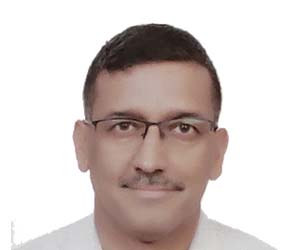In an article on 23 March 2020, noted Myanmar author and journalist Bertil Lintner raised the alarm about a number of respiratory disease related deaths in Myanmar and questioned the Government’s claim that there were indeed zero cases of COVID-19 in the country. As if on cue, Myanmar officially confirmed the first instances of COVID-19 on the same day i.e. 23 March 2020, of two positive cases, both with histories of having visited UK and USA respectively. With this announcement, Myanmar now officially joins the league of nations battling the pandemic. Let us see how the disease is likely to pan out in the Golden Land.
From the perspective of health care facilities, Myanmar is poorly off and hence likely to suffer from shortcomings in the management of the disease. Apparently, till now, the Myanmar government had touted two main reasons for the COVID-19 not reaching Myanmar; one was the geographic distance from Wuhan, the COVID-19 epicentre; and secondly, the lifestyle and diet of the Myanmar population. Both are utopian musings of a government in denial. A cursory understanding of the plan for management of COVID-19 is to slow down the spread so that the healthcare system is not overwhelmed by the numbers. Hence, the need for social distancing and isolation. This helps ‘flatten the curve’ to the point where the total number affected remains less than the peak capacity of the medical services of the country. But how will this work in the case of a country with very poor medical facilities and very poor internal connectivity? Thus it possibly stands to reason that for Myanmar, medical and para-medical teams need to be airlifted to villages where they need to monitor, guide and hand hold the population to manage afflicted cases in situ and prevent movement of population to towns to seek medical assistance which in any case does not meet the requirements of the locals. The bigger question is, where are the resources?
To give credit to Myanmar, it began taking actions from the word go. Authorities turned back a China Southern flight from Guangzhou with almost everyone on board on 31 January 2020 after one of the passengers was found with flu symptoms similar to the fast-spreading coronavirus, a government spokesman said. The borders with China, Thailand and India have been sealed. The other ticking time bomb is the massive Rohingya refugee camp in Cox’s Bazar adjoining Myanmar. Though there have been no cases of coronavirus as yet, they are a vulnerable population with devastating consequences if afflicted by coronavirus.
Simplistically put, the coronavirus is likely to impact Myanmar in five ways. With borders now being sealed, it has closed all markets in Bangladesh, China, India, Laos and Thailand; this has caused a paucity of raw material from and finished goods to China, Thailand and India; the closure of markets has hit the industry hard with bankruptcy and layoffs, especially in the textile industry being the hardest hit. Finally, the perishable goods industry has been written off with surplus stocks rotting, unable to reach the markets.1
In analysis, it is felt that though the virus will have a massive negative effect on the economy, the impact on the local population, bulk of who have a rural orientation, will not be catastrophic. This is since subsistence level farming is a norm and it is unlikely that there will be any starvation related deaths. Given the nature of agriculture in rural Myanmar, there are unlikely to be any major food shortages. Fisheries and poultry are available in abundance. If anything, the larger towns such as Yangon and Nya Pyi Taw may face shortages. The loss of jobs and the closure of factories is unlikely to be long term, and given that the local population is by and large used to insulation and isolation, they will fare better than their compatriots in the Western countries.
India has always included Myanmar students in the evacuation from Wuhan and other places, which speaks well for bilateral relations, but is not enough. It now needs to step into the fray and provide medical teams, testing kits, air resources for enabling Indian and Myanmar medical teams to reach the villages, food parcels, thermometers and much more. All this, critics would point out, will be at the cost of its own people in India. Thus, authorities need to realise that given the ethnic, linguistic and cultural similarities across the 1643 km India Myanmar Border (IMB) and the existence of a Free Move Regime2 (FMR), though now suspended, the natural tendency of the afflicted local population of bordering regions of northern Kachin State, Naga Self-Administered Zone, Sagaing Division and Chin State will prefer to turn towards Lohit, Kohima, Imphal and Aizwal rather than towards Yangon which is further away from them, both physically and mentally. Thus, to prevent the spread of the epidemic in our North East, we will have to take the battle into the FMR zone and beyond and incentivise the Myanmar locals bordering India, to stay in their zones, rather than moving into India.
Therefore, India must react fast, because viruses don’t respect international borders.
References
- Please see,
https://www.thestar.com.my/news/regional/2020/03/12/covid-19-india-cancels-almost-all-visas-closes-myanmar-border,
https://www.mmtimes.com/news/muses-melon-exports-severely-hit-virus-outbreak.html
https://www.mmtimes.com/news/fisheries-exports-not-badly-hit-agriculture-virus.html
https://www.mmtimes.com/news/chinese-garment-factory-yangon-goes-bankrupt.html
https://elevenmyanmar.com/news/more-than-1000-garment-workers-out-of-job-due-to-factory-closure
http://www.mizzima.com/article/coronavirus-affecting-myanmar-factory-production
https://www.irrawaddy.com/news/burma/11-factories-myanmar-close-due-lack-orders-raw-materials.html
(All accessed on 15 March 2020). - The FMR is a distance of 16 km on either side of the IMB, notified by both Governments, up to which local residents can travel without visa. There are over 250 villages with over 300,000 people living within 10 kilometres of the border who frequently cross the border through 150 small and large formal and informal border crossings.
(The paper is the author’s individual scholastic articulation. The author certifies that the article/paper is original in content, unpublished and it has not been submitted for publication/web upload elsewhere, and that the facts and figures quoted are duly referenced, as needed, and are believed to be correct). (The paper does not necessarily represent the organisational stance... More >>
Image Source: https://upload.wikimedia.org/wikipedia/commons/thumb/4/4e/Myanmar_Map_Flag.svg/1200px-Myanmar_Map_Flag.svg.png










Post new comment